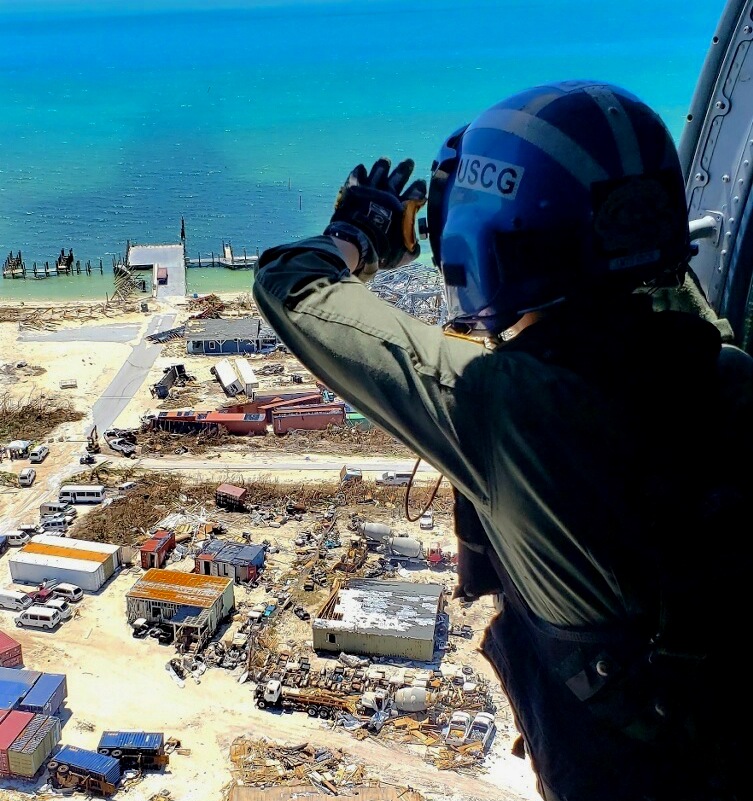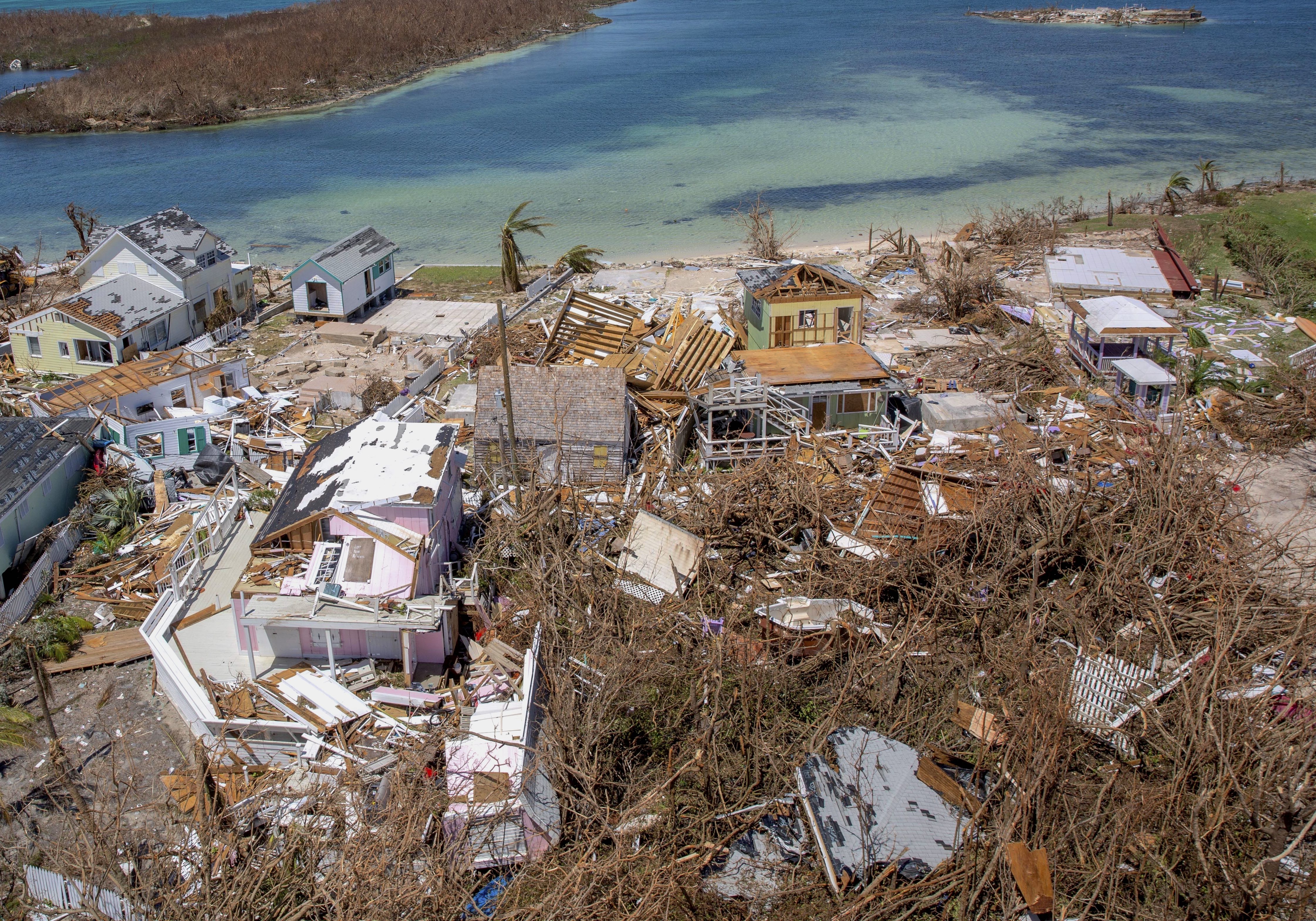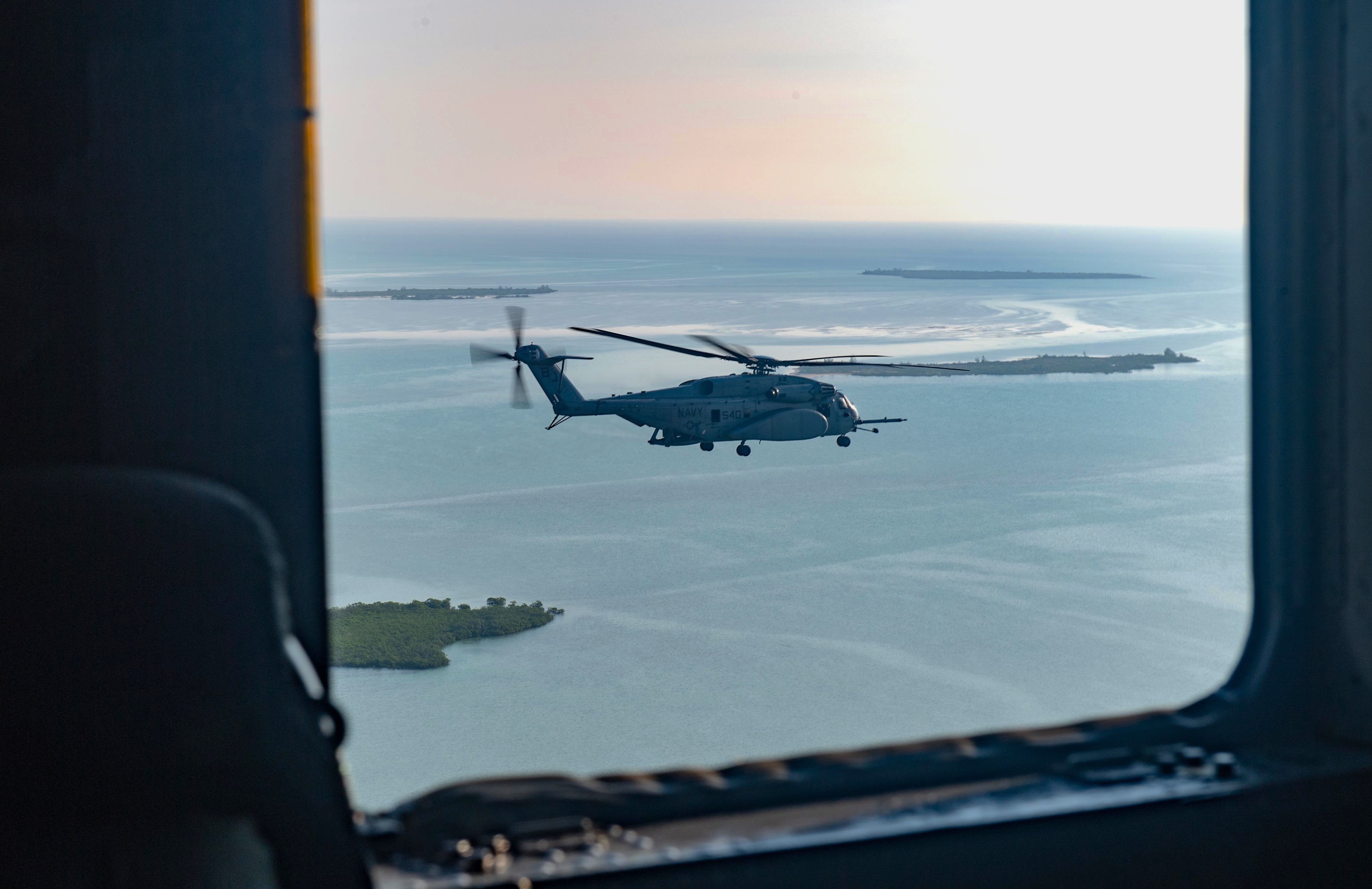
NASSAU, THE BAHAMAS — With 700 islands spread over 180,000 square miles of bright blue ocean, it’s difficult to imagine the airspace over the Bahamas becoming crowded. But so many U.S. military, government, private and other aircraft have flown to the rescue in the aftermath of Hurricane Dorian that the skies are “tight,” according to one Coast Guard pilot.
USNI News embarked on his C-130H transport plane packed with food, medical supplies and crews for several MH-60 helicopters stationed on Andros Island. The return flight to Florida on Sept. 7 was delayed more than an hour in Nassau.
“The airspace can get very busy. … A lot of people, obviously all good-intentioned, are flying around,” Coast Guard Lt. Cmdr. Dan Deangelo told USNI News. “You’re working with a finite airspace there, so … obviously, everyone wants to do the right thing and help out, but it can get very tight. You run out of space pretty quick. Aviation safety is still a big factor, of course, even for the rescuers.”
Dorian spun into the northeastern Bahamas as the most powerful Category 5 storm on record. Its eyewall passed directly over Great Abaco and its out islands before stalling over Grand Bahama for nearly 40 hours. Powerful wind gusts topping 220 miles per hour destroyed or damaged almost every structure on the islands. The Marsh Harbour International Airport was completely flooded for at least two days. At least 70,000 people lost their homes, according to the U.N.

Aside from the U.S. Coast Guard, the Bahamian government has aircraft flying between the stricken islands and Nassau, the country’s capital. There are also U.S. State Department, Department of Homeland Security and Customs and Border Protection helicopters and fixed-wing aircraft using the relatively small Nassau airport. Non-governmental organizations like celebrity chef José Andrés’ mobile food preparation operation have shown up with chartered helicopters from Florida. So have dozens of news organizations, private pilots and wealthy homeowners trying both the assess the damage and bring in supplies
Grand Bahama International Airport (MGYF), Treasure Cay Airport (MYAT) and Leonard M. Thompson International Airport (MYAM) at Marsh Harbour have become overwhelmed with military and civilian air traffic and still are operating with limited or no air traffic control. The FAA is assisting and has put a temporary flight restriction over Grand Bahama.
As vast as the Bahamas territory is, the ongoing rescue operations are swirling around just two main islands – Great Abaco and Grand Bahama.
Thousands of Bahamian residents are seeking flights to islands with power and freshwater. Wrecked ports, airspace restrictions and scores of sunken boats are slowing the evacuation process. Abaco, a chain of dozens of islands, uses rainwater cisterns for drinking water. All of them were inundated or compromised by saltwater, so residents need constant resupply of drinking water or evacuation.
The handful of Coast Guard MH-60 Jayhawks based on Andros are leading the effort to move those people to safety. As of Monday morning, they had rescued a total of 383 people with five helicopters. Five cutters also are conducting search-and-rescue missions nearby. Those forces are operating in concert with the Bahamas National Emergency Management Agency and the Royal Bahamas Defence Force.

Those Jayhawks are operating out of the Atlantic Undersea Test and Evaluation Center (AUTEC) on Andros, a remote test range where the U.S. Navy measures the acoustic signatures of submarines and tests other undersea warfare equipment.
The Coast Guard is cooperating with the Navy in using the airfield at AUTEC, but the larger Navy is not actively involved in rescue operations.
On Monday, the amphibious assault ship USS Bataan (LHD-5) joined the international effort delivering supplies, transporting U.S. relief personnel and providing medical evacuations.
Aviation assets like Marine MV-22 Ospreys from Bataan are crucial to making damage assessments and rescue operations, DeAngelo said. The C-130 he pilots has been tasked with assessing how many structures and what kind remain on certain islands. While the Grand Bahama, Nassau and Andros airports can accept the four-prop fixed-wing aircraft, Marsh Harbour on Great Abaco – one of the most severely hit islands – remains inaccessible to anything but rotorcraft.

DeAngelo’s primary mission on Sept. 7 was to rotate out MH-60 crews on Andros. Many of them had been flying six to eight hours a day for nearly a week and needed rest at their base in Clearwater, Fla.
“Today our tasking was to come down here and transport some 60 crews and other personnel,” he said. “Helicopter crews, pilots, maintainers, medical personnel, a lot of them have been down here going on a week, so to maintain our ability to maintain the [search and rescue] presence here and affect the missions the Coast Guard has been doing in the Bahamas, we got to keep them fresh.”
The incoming crews will continue the search-and-rescue work from Andros, about a 20-minute flight to the affected areas in Abaco and Grand Bahama, where victims wait and continue to search for the living. As of Tuesday, the death toll was 45, but that number will almost certainly rise as crews continue sifting through the sand and rubble.




